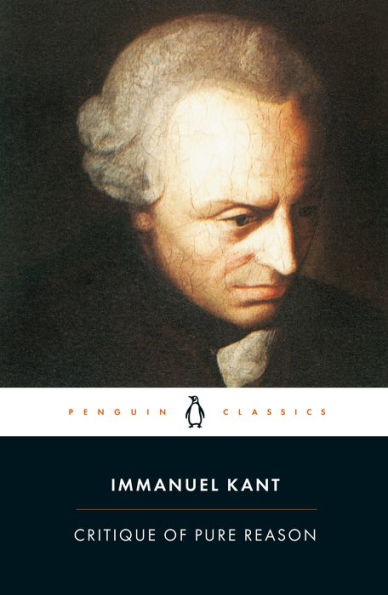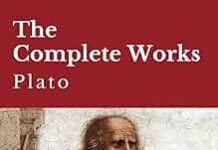In the vast landscape of philosophical inquiry, Immanuel Kant’s works stand as towering beacons, illuminating the complex interplay between reason, experiance, and knowledge. invites readers to embark on an intellectual journey through the intricacies of Kantian philosophy, offering a careful and nuanced examination of one of his most influential texts. this review seeks not only to unpack the dense arguments and subtle distinctions that characterize Kant’s thought but also to explore how the book navigates the delicate limits of reason itself-a theme ever-relevant in contemporary discourse. Through measured analysis and reflective insight, the introduction sets the stage for a deeper understanding of Kant’s enduring legacy.
Exploring the Core Themes and Philosophical Groundwork That Define Kant’s Profound Investigation into Reason’s Limits

At the heart of Kant’s inquiry lies a rigorous examination of human reason, not as an all-powerful force, but as a faculty with intrinsic boundaries. Through his critical philosophy, Kant dissects reason’s ambitions to grasp the metaphysical and the unobservable, urging us to recognize the distinction between phenomena and noumena-the known realm of experience versus the unknowable essence of things-in-themselves. This separation compels a fundamental reevaluation of knowledge, truth, and the reach of speculative thought. Rather than dismissing reason’s capacity, Kant elevates it by setting a framework where it can responsibly function, steering away from illusions birthed from overextension.
Within this framework, several pivotal themes emerge:
- The synthetic a priori: Knowledge that is both informative and necessarily true, foundational to mathematical and metaphysical reasoning.
- The categories of understanding: Innate conceptual lenses shaping our perception of reality.
- Transcendental idealism: The idea that objects conform to our mode of perception rather than existing independently as we conceive them.
These concepts not only chart the limits of reason but also propose the means by which humans navigate the interplay between subjective experience and objective knowledge.
| Key Theme | Philosophical Impact |
|---|---|
| Synthetic a priori | Establishes necessary truths beyond mere experience |
| Categories of understanding | Organize phenomena for coherent cognition |
| Transcendental idealism | Limits knowledge to appearances, not things-in-themselves |
The Structural Elegance and Methodological Rigor Behind Kant’s Articulation of Pure Reason’s Boundaries

The brilliance of kant’s methodology rests on several key pillars that sustain his intellectual edifice:
- Systematic inquiry: each argument builds on previous foundations, ensuring coherence and depth.
- Critical self-reflection: reason turns inward, scrutinizing its own faculties and limitations.
- Dialectical rigor: opposing viewpoints are not dismissed but synthesized into a higher understanding.
- Analytic-synthetic distinction: clarifying how knowledge is grounded in both experience and pure concepts.
| Aspect | Purpose | Outcome |
|---|---|---|
| Transcendental Deduction | Validate concepts’ applicability | solid foundation for knowledge |
| Critique of Metaphysics | Expose unfounded claims | Demarcate reason’s limits |
| analytic Method | Break down complex ideas | Clarify conceptual relations |
| Synthetic a priori | Bridge experience and pure logic | Enable universal truths |
Interpreting the Synthetic A Priori: How Kant Bridges Experience with Innate Knowledge in His Critical Inquiry

Central to kant’s revolutionary philosophy is the nuanced concept of synthetic a priori knowledge, a type of understanding that transcends mere experience yet isn’t derived solely from abstract reasoning. Unlike analytic judgments, which clarify what is already contained in the concept, synthetic a priori judgments expand our knowledge by connecting innate structures of the mind with the unfolding world. Kant posits that our cognitive faculties are equipped with pre-existing frameworks-such as space and time-that actively shape our perception, allowing us to grasp universal truths. This delicate interaction ensures that experience is not a passive reception but an active institution of phenomena through categories that are inherently present in human reason.
- Innate Cognitive Structures: Concepts like causality and substance are not learned but form the lens through which experience is interpreted.
- Empirical Input: Sensory data provides the raw material that these a priori concepts structure into coherent knowledge.
- Transcendental Unity: The synthesis performed by the mind is what binds fragmented data into meaningful experience.
| Dimension | Experience | Innate Knowledge |
|---|---|---|
| Nature | Empirical and variable | Universal and necessary |
| role | Provides sensory content | Structures and organizes content |
| Examples | Perceiving objects in space | Concept of causality |
A Closer Look at the Transcendental Dialectic and Its Role in Revealing Illusions of Human Understanding
Immanuel Kant’s Transcendental Dialectic serves as a profound exploration into the very pitfalls of human reason. It unveils how our rational faculties, in their bold ambition to grasp the infinite and unconditioned, often fall into traps of illusion. Kant meticulously dissects these illusions, showing that when reason overreaches-attempting to conceptualize the soul, the universe as a whole, or God-it inevitably constructs paradoxes that cannot be resolved by empirical experience or pure logic. This dialectical tension exposes a critical limitation: reason’s hunger for absolute totality stands in conflict with the finite conditions of human cognition. In essence, the Transcendental Dialectic guides us to recognize the boundaries that reason must respect, preventing it from slipping into metaphysical errors.
Key illusions highlighted include:
- The Paralogisms concerning the self,where reason falsely presumes a stable,knowable soul.
- The Antinomies of Pure Reason, which pit contradictory yet plausible arguments about the cosmos’ finitude and infinity against each other.
- The Ideal of Pure Reason, representing the futile quest for a definitive proof of God’s existence.
| Illusion Type | Effect on Understanding | philosophical Outcome |
|---|---|---|
| Paralogisms | Misleads self-identity | False certainty of the soul |
| Antinomies | Creates contradictory cosmologies | Reveals limits of metaphysics |
| Ideal of Pure Reason | provokes endless theological debate | Highlights speculative reason’s boundaries |
By thoroughly exposing these illusions, the dialectic doesn’t just negate reason’s promises but rather reorients it toward a more disciplined and humble inquiry. The emphasis shifts to understanding reason’s role within the sphere of possible experience, rather than transcending it. Thus, this section of Kant’s masterpiece is not an abdication of rationality but an invitation to intellectual integrity-an acknowledgment that faithful navigation through knowledge demands recognizing where reason must pause, reflect, and even surrender to the limits of human understanding.
Evaluating Kant’s Impact on Modern Epistemology and the Shift Toward Critical Philosophy in intellectual History

The ripple effects of this paradigm shift can be seen across modern intellectual history, influencing not only philosophers but also scientists, psychologists, and theorists of human knowledge. The table below highlights key aspects of Kant’s impact alongside their corresponding developments in contemporary thought, offering a snapshot of how his legacy continues to evolve and inspire critical inquiry:
| Kantian Concept | Modern Epistemological Reflection |
|---|---|
| Phenomena vs. Noumena | focus on interpretative frameworks over objective reality |
| Categories of Understanding | Cognitive schemas influencing perception and theory-building |
| Copernican Revolution in Philosophy | Shift to subject-centered knowledge production |
| Limits of Pure Reason | Recognition of the boundaries of scientific and metaphysical claims |
- Critical Self-Reflection: Encouraging philosophers to question not only the objects of knowledge but also the conditions enabling such knowledge.
- Interdisciplinary Resonance: Influencing fields beyond philosophy, including cognitive science and hermeneutics.
- Foundations for Postmodern Critique: Inspiring skepticism toward universal narratives through an emphasis on the limitations inherent in reason.
The Challenges and Controversies Surrounding Kant’s Notions of Noumena and Phenomena in Contemporary thought

Modern thinkers also grapple with the practical implications of this duality for epistemology and metaphysics. Among the controversies are concerns about:
- The accessibility of objective knowledge: If the phenomena are only appearances shaped by human cognition, how can we claim objective truths?
- The role of empirical science: Does Kant’s dichotomy undermine scientific realism by confining knowledge to human perception?
- Ethical implications: How does the unknowability of noumena relate to Kant’s moral philosophy, especially the notion of free will?
| Aspect | Challenge | Controversial Point |
|---|---|---|
| Epistemology | Limits of human cognition | Can we truly separate noumena and phenomena? |
| Metaphysics | Existence of things-in-themselves | Are noumena real or conceptual constructs? |
| ethics | Freedom and autonomy | Does unknowable noumenal self guarantee moral responsibility? |
Practical Recommendations for Readers: Approaching Kant’s Text with Patience, Context, and Philosophical Dialogue
When engaging with Kant’s dense and intricate prose, patience becomes an essential virtue. His ideas are not always instantly accessible, and rushing through the text can lead to misunderstandings or a superficial grasp of his revolutionary insights. Take time to pause, reflect, and re-read sections that puzzle you-each sentence frequently enough builds on a complex web of prior arguments. Additionally, situating Kant’s work within the historical and philosophical context of the 18th century can illuminate his motivations and the intellectual challenges he sought to address. Familiarize yourself with the Enlightenment background,and also key figures like Hume and Leibniz,whose ideas Kant critically responded to. This groundwork transforms the reading experience from a mere academic exercise into a meaningful exploration of ideas that continue to resonate today.
Another powerful tool for navigating Kant’s philosophy is philosophical dialogue. Discussing the text with fellow readers or joining study groups can surface diverse interpretations that enrich your understanding. Consider framing your study through questions such as:
- How does Kant redefine the limits of human reason?
- In what ways do his arguments challenge traditional metaphysics?
- What contemporary issues can his critique illuminate?
Engaging actively, rather than passively absorbing, turns kant’s writings into a living conversation across centuries. To aid in organizing this process, here is a simple table outlining key practices for productive reading:
| Practice | Benefit | Example |
|---|---|---|
| Slow, deliberate reading | deeper comprehension | Re-reading complex arguments |
| Contextual research | Enhanced background understanding | Studying Enlightenment thinkers |
| philosophical discussion | Diverse perspectives | Group debates and seminars |
Bridging Philosophy and Everyday Life: How Kant’s Exploration of Reason Influences Ethical decision-Making Today

Today, Kant’s influence permeates fields far beyond philosophy-bioethics, law, and even corporate social responsibility draw from his insistence on rational consistency and duty. Below is a succinct comparison illustrating how Kantian ethics contrasts with other decision-making frameworks that often dominate public discourse:
| Framework | Guiding Principle | Focus |
|---|---|---|
| Kantian Ethics | Universal Moral Laws | Duty and Reason |
| Utilitarianism | Maximizing Overall Happiness | Consequences |
| virtue Ethics | Developing Moral Character | Habits and Flourishing |
By integrating Kant’s insistence on rigorous rationality with the complexities of contemporary life, individuals and institutions are better positioned to navigate ethical dilemmas with clarity. This enduring dialogue between reason,morality,and action helps bridge abstract philosophy with the tangible challenges we face daily,underscoring that ethical decision-making is as much about questioning our reasoning processes as the outcomes they produce.
Visualizing Kant’s Conceptual Framework: Suggestions for Creating Compelling Educational AI Imagery That Reflects Philosophical Depth

When constructing such imagery, consider incorporating these strategic elements:
- Visual metaphors: Use bridges to signify the synthesis of intuition and concepts, or mirrors to reflect the self-reflective nature of reason.
- Color psychology: Employ cool blues and grays to convey rationality, contrasted with warmer tones for the empirical world.
- Layering: Utilize superimposed translucent layers to mimic the layers of human cognition delineated by Kant.
| Visual element | Philosophical Significance |
|---|---|
| Crystalline Geometry | Pure concepts of understanding |
| Floating Light Orbs | Intuitive sensibility |
| Intersecting Paths | Judgments of reason |
| Shadow Silhouettes | Limits of empirical experience |
Engaging with Kant’s Masterpiece: Tips for Readers Seeking to Integrate Its Insights into Academic and Personal Study

Integrating Kant’s insights into both academic and personal contexts benefits from a structured yet flexible framework. Consider maintaining a philosophical journal where you correlate Kantian concepts with contemporary issues and personal experiences. This practice sharpens critical thinking by making abstract ideas tangible and relevant.Below is a simple example of how to organize this reflection process:
| Concept | Academic Submission | Personal Reflection |
|---|---|---|
| Categorical Imperative | Ethics essays & debates | Decision-making in daily dilemmas |
| Phenomena & Noumena | Epistemology discussions | Perception of reality vs belief |
| Transcendental Idealism | Theoretical philosophy critiques | understanding limits of reason |
Engaging in regular, active reflection strengthens the bridge between Kant’s complex theories and their practical implications, ensuring that study remains not only an intellectual pursuit but a transformative experience.
decoding the Language and Style of Navigating Reason’s Boundaries for a More Accessible Reading Experience

For a more accessible grasp, approaching the text with a flexible toolkit proves invaluable.Consider these strategies:
- Chunking: Break down dense paragraphs into smaller conceptual units.
- Contextual Mapping: Relate unfamiliar terms to contemporary equivalents.
- Dialogic Reading: Frame Kant’s assertions as a conversation, questioning each premise actively.
| Stylistic Feature | Effect on Reader | Suggested Approach |
|---|---|---|
| Abstract Terminology | Creates initial opacity | Use glossaries and definitions |
| Complex Sentences | Challenges sustained focus | Read slowly, rephrase in simpler terms |
| philosophical Rigour | Demands critical engagement | Reflect on implications beyond text |
Understanding the Historical Context That Shapes kant’s Arguments and Enhances Appreciation of His Intellectual Boldness

immanuel Kant’s philosophical enterprise emerged amidst the intellectual turbulence of the late 18th century, a period marked by the fading authority of traditional metaphysics and the rise of empirical science.In this landscape, the Enlightenment was championing reason as the primary tool for progress, yet it also confronted limits in what reason alone could conclusively establish. Kant’s work can be seen as a daring response to these tensions-an effort to carve out a new path that neither blindly embraced skeptical empiricism nor uncritically upheld dogmatic metaphysics. His insistence on scrutinizing the conditions that make knowledge possible was revolutionary, embodying a shift from debating the content of metaphysical claims to investigating the very framework of human cognition.
- Philosophical skepticism: Prevailing doubts about metaphysical knowledge pushed Kant to reconcile reason’s reach with its inherent constraints.
- Scientific advancements: Newtonian physics had demonstrated natural laws, inspiring Kant to consider how these laws were cognitively accessible.
- Enlightenment ideals: The elevation of critical inquiry shaped his methodical approach to understanding reason itself.
Appreciating the historical milieu of Kant’s arguments reveals the intellectual bravery underpinning his project. His critiques did not seek to diminish reason but to elevate it by delineating its proper use and boundaries. In doing so, Kant anticipated a future where philosophy would coexist dynamically with science and empirical study without overstepping its legitimate domain. This nuanced positioning required bold original thinking-one that could both embrace change and preserve philosophical rigor.
| Contextual Factor | Impact on Kant’s Philosophy |
|---|---|
| Decline of Dogmatic Metaphysics | Prompted critical evaluation of metaphysical claims. |
| Rise of Empiricism | Inspired synthesis between sensory experience and rational structures. |
| Enlightenment Rationalism | Encouraged a systematic inquiry into the limits and capabilities of reason. |
The Author Behind the Review: Insight into the Thoughtful Curator Bringing Kant’s Complex Ideas to Contemporary Audiences

In navigating the intricate terrains of Kant’s philosophy, Navigating Reason’s Boundaries offers a compass both precise and probing. This thoughtful review does not seek to untangle every knot but instead invites readers to appreciate the profound architecture of a masterpiece that continues to challenge and inspire. As we close this exploration, we are reminded that engaging with Kant is less about finding definitive answers and more about embracing the courage to question the very limits of reason itself.












